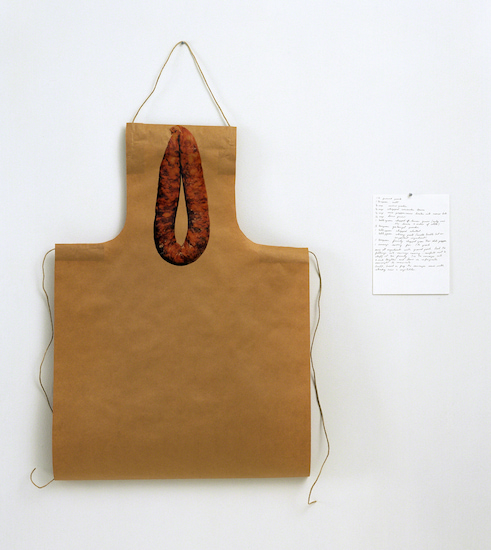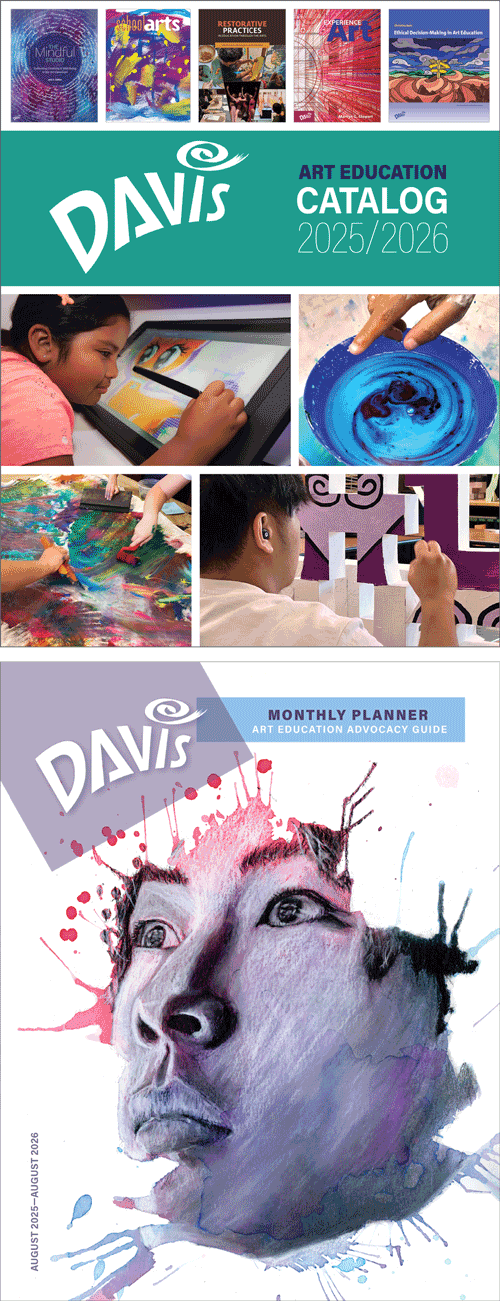Artist Birthday: Rirkrit Tiravanija
Since the beginning of the 2000s, contemporary art of Thai artists has taken a prominent role in world art history. Rirkrit Tiravanija is renowned for his installations and sculptures that address numerous issues, as well as incorporate traditional aspects of Thai culture—especially food—into his installations.
Artist Birthday for 21 July: Rirkrit Tiravanija (born 1961, Thailand, born Argentina)
Rirkrit Tiravanija is a contemporary Thai artist who infuses his work with traditions of Thai culture, such as cooking.
 |
| Rirkrit Tiravanija, Untitled (apron and Thai pork sausage), 1993. Multiple of brown paper apron with string, tape, and decal, plus photocopied recipe, 104 x 71.3 cm. The Museum of Modern Art, New York. © 2025 Rirkrit Tiravanija. (MOMA-P3084) |
Tiravanija is renowned for his intimate, participatory installations. They often revolve around shared communal traditions such as cooking Thai meals. He was at the forefront of the shift in avant-garde art in Thailand in the 1990s away from traditional art forms toward "relational aesthetics". He has continually challenged and expanded the social dimension of art.
Untitled (apron and Thai pork sausage) is a multiple that can be used to make a pork sausage. Tiravanija is best known for creating situations in which the division between art object and everyday activity is deliberately blurred, by serving food in a gallery, for instance, or creating situations in which others are invited to produce something: “Like a good recipe, everyone knows what it is, what it tastes like and even how to make it again—perhaps even differently, following their own interpretation; or perhaps it would be a base for something completely different, a possibility.” (MOMA Gallery label from Collection 1940s—1970s, 2019)
Thai modern art began to develop around 1924, when Corrado Feroci (1892-1962) an Italian sculptor, was invited to Thailand by King Rama VI ( 1880-1925). He produced bronze statues of the exploits of Thailand’s past heroes. In 1933, one year after the Revolution which established a constitutional monarchy, Feroci was asked to establish an institute of fine arts within the department of Fine Arts. The purpose of this new school was to instruct a new generation of sculptors and painters in modern art.
Feroci devoted his energies up to the time of his death in 1962 to this laudatory purpose. The school was eventually elevated to the status of a university and changed its name to Silpakorn (Fine Arts) University. Feroci’s own name was changed to be Silpa Bhirasri, the name by which he is known today. Silpa Bhirasri is regarded as the Father of Modern Art in Thailand.
Following the introduction of modern art in Thailand, Thai painters began experimenting with Impressionism and Cubism. Some Thai painters chose nature themes or depicted rural scenes, usually devoid of people. Others have chosen works displaying Buddhist themes rendered in a Surrealistic realism. In the 2000s, contemporary Thai artists work in the full range of art forms, including media arts, and many are recognized internationally for their contributions to novel forms of contemporary aesthetics.
Rirkrit Tiravanija, son of a Thai diplomat, was born in Buenos Aires, Argentina, and grew up primarily in Thailand, Ethiopia, and Canada. He received a BA (1984) from Ontario College of Art, Toronto, and his MFA (1986) from the School of the Art Institute of Chicago.
Through his installations and happenings, he often addresses social issues and political concerns, such as protests against the Thai government. He has come to incorporate a wide variety of media, including painting, printmaking, video, photography, mixed-media assemblage, performance, and music. He now lives and works in New York, Berlin, and Chiang Mai.

Comments